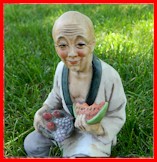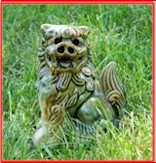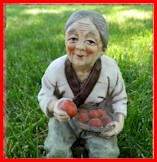Okinawan Tug of War
It seems unneccesary to explain what a tug of war is. It is obviously a contest involving two teams pulling on both ends of a rope. It's a sport which was a regular event at the Olympic games in Greece, with universal rules and methods.
On Okinawa, tug of wars are conducted primarily during the summer months and in some locations in October. It is an annual event although some places choose to hold one once every few years in conjunction with village traditions.
Several stories exist regarding the origin of the Okinawan tug of war but the basic purpose is always the same. Tug of war contests are conducted to give thanks for good crops, to pray for rainfall, to pray for the expulsion of evils and for prosperity in business. It is characteristic of the festival to entertain gods, buddhas and ancestral spirits with rivalry.
Like most Okinawan traditions and festivals, the tug of war originated from an ancient legend. Unfortunately it is not known from which legent it is derived.
One legend tells of two farming brothers who lived in a village in the southern part of Okinawa. During harvest one year the brothers argued over who had the best harvest. They fought for days without recess and finally decided that the dispute should be resolved by having a tug of war. The brother who won would then obviously have had the better harvest. Since that day tug of wars have traditionally been held at the time of harvest.
Another legend claims that the tug of war is of foreign origin. In ancient times when Okinawa's main island was divided into three parts and ruled by three kings the king of the southern part heard of the tug of war, its tools, manners and rules from China. He introduced the sport to his territory and let the people try it. The ropes, which were made of rice plant stems, were burnt after the tug of war and the ashes were thrown into the river. It was a ceremony to expel the plagues and to pray for bumper crops. The event's purpose was to unify and to motivate the people to work.
The most interesting legend originates from Chatan Village, located in central Okinawa, and Kushi Village in the north of the main island. In Okinawa's old days there was a custom in which the people abandoned their old relatives in a deep mountain and left them to die. The old were considered useless, unable to work and only good for consuming valuable food.









